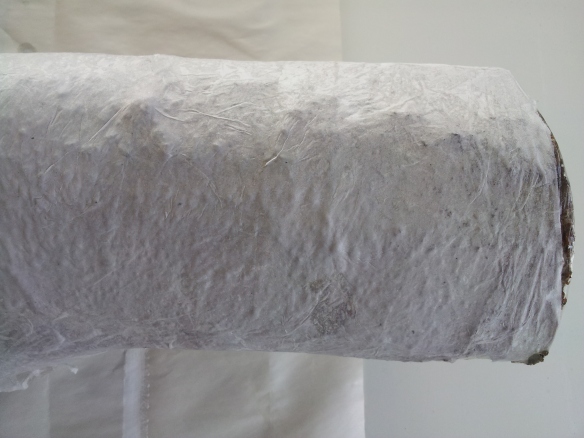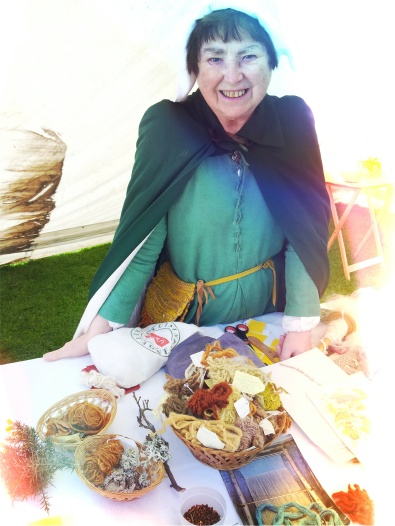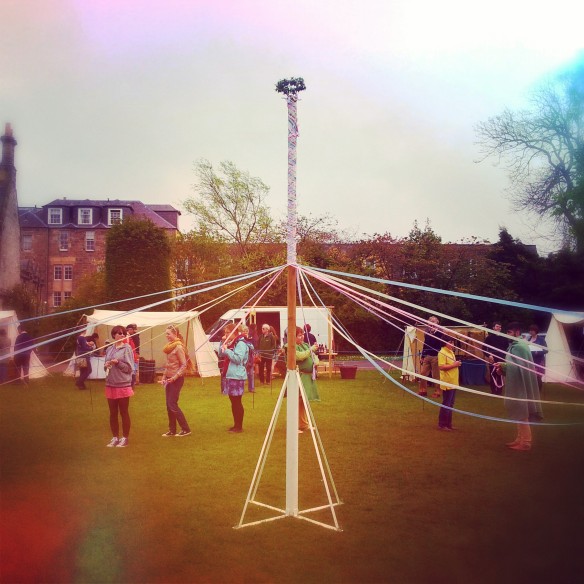Tonight I went to the private viewing of the Alison Watt exhibition at Perth Museum and Art Gallery. Alison is a well known figure on the Scottish Contemporary art scene, and I remember first encountering her work about 15 years ago, in a small gallery in St Andrews. Originally a painter of figures, and often nudes, she has won awards from the National Portrait Gallery.
When I first came across her work, she had just begun painting large canvasses of white fabric, detailing all the creases and folds. I remember admiring these pieces at the time, as they had a really calming, serene effect, and the scale of them was impressive.
The show I saw tonight included some earlier works, but also her more recent works, which were all “fabric” paintings. Particularly memorable was a piece of blue fabric which was almost like a sort of damask with a silky pattern on it, a technically demanding piece and beautifully executed. Standing beside it was something else that caught my attention…my favourite writer Ian Rankin, creator of the Edinburgh detective Rebus. Apparently he is a big fan of Alison’s and has a few of her pieces.
Most of the pieces were her famous white fabric paintings, which I must confess attract me, as some of my recent work seems to involve the process of wrapping, and also the white minimalism which I love.
The folds in the cloth often seem to mimic the human, especially the female form. It is as if she is attempting to record a ghost image of what was lying under or on the sheets. Up close, the painting above doesn’t really look terribly realistic, in fact I hate to admit that it almost looked a bit laboured and amateur, like a piece from a school portfolio. But standing back about 5 metres, you begin to get the desired effect: the canvas becomes a draped piece of cloth, with folds rising and falling over one another. It is pure and pristine, and you can almost smell the freshly laundered cotton. In fact it almost makes you want to wrap yourself in it and shelter in its peaceful comfort.
Phantom (2007) Oil on canvas Dimensions: 213.4 x 335.3cm
The idea of leaving a trace or a mould of an entity which was once present was a similar concept to my wrappings and moulds of trees which I produced as part of the Exploratory Project. Tinder I and Tinder II involved wrapping baby wipes around logs which had once been healthy beech branches, but had fallen from their majestic grace and succumbed to infection and rot.
These gnarled branches are now ‘ghost sculptures’, shells of what used to be, like a shed skin, or empty cocoon. Like Alison’s absent figures, these pieces depict absent parts of the landscape, their forms captured in a pure and simplistic way. The lack of colour draws our attention to the form itself, and also to the surrounding shadows which it casts, like spirits trying in vain to cling to their former self.
For my next wrapping pieces, I have a notion to use silk, as it is more of a natural material and comes in larger sizes, which would allow me to wrap the whole item in one piece, rather than the patchwork effect of using smaller wraps. The whole idea of the wrapping is now leading me to think that I am perhaps subconsciously wanting to care for or look after these unwanted fragments of nature, in hope that they will feel wanted or loved.
































































 The custom of dancing around the maypole is an ancient fertility rite, which was usually performed on May 1st (May Day). The custom dates back to ancient times when tree worship was practised, and most of the original maypoles were made from birch trees, which were tall and slim. The maypoles were banned by Puritans in 1644, but erected again in 1660 when Charles II was in power.
The custom of dancing around the maypole is an ancient fertility rite, which was usually performed on May 1st (May Day). The custom dates back to ancient times when tree worship was practised, and most of the original maypoles were made from birch trees, which were tall and slim. The maypoles were banned by Puritans in 1644, but erected again in 1660 when Charles II was in power. 









